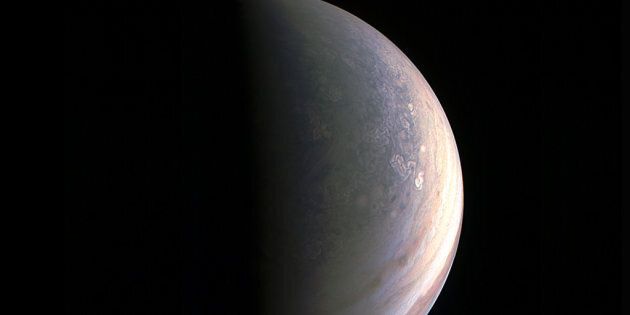
NASA's Juno spacecraft has sent back dazzling photos of clouds, storms and shadows from the surface of Jupiter, providing a unique window into the largest planet in our solar system.
The stunning photos were transmitted after Juno completed its first orbit of the gas-giant planet on 27 August, and were sent a staggering 4,200 kilometres from the surface of its swirling clouds.
The photos, from the orbiter's JunoCam, depict Jupiter's north and south poles and took one-and-a-half days to reach earth.
"(This is the) first glimpse of Jupiter's north pole, and it looks like nothing we have seen or imagined before," said Scott Bolton, principal investigator of Juno from the Southwest Research Institute in San Antonio.
"It's bluer in color up there than other parts of the planet, and there are a lot of storms ... this image is hardly recognisable as Jupiter. We're seeing signs that the clouds have shadows, possibly indicating that the clouds are at a higher altitude than other features."

Jupiter's poles have not been seen from this perspective since the Pioneer 11 spacecraft flew by the planet in 1974.
The spacecraft also recorded ghostly-sounding radio wave emissions coming from above the planet.
"Jupiter is talking to us in a way only gas-giant worlds can," said Bill Kurth, co-investigator for the Waves instrument from the University of Iowa, Iowa City.
"Waves detected the signature emissions of the energetic particles that generate the massive auroras which encircle Jupiter's north pole. These emissions are the strongest in the solar system.
"Now we are going to try to figure out where the electrons come from that are generating them."
Juno was launched on 5 August, 2011 from Cape Canaveral, Florida and first reached Jupiter on 4 July this year. It will make 36 orbits in total, allowing NASA to observe the planet closer than ever before.